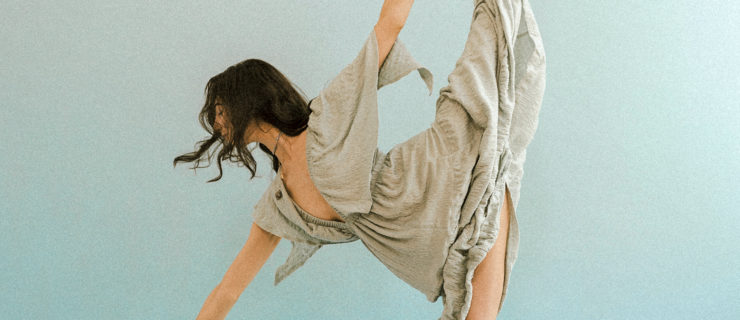My Body Turned On Me

Kelsie competing (courtesy Hall of Fame Dance Challenge)
I was 10 when I first knew something was wrong. I was dancing at a dress rehearsal, and suddenly, without warning, I couldn’t breathe. It was terrifying. My teacher called an ambulance, and I was rushed to the emergency room. My throat had swollen shut and my lips were big and puffy, so the doctors assumed I’d had an allergic reaction. They diagnosed me with allergies to ibuprofen and naproxen, as well as exercise-induced asthma, and sent me home.
After that, similar attacks happened every few months or so—and my allergy medications were doing nothing to help. I could tell an attack was starting because I’d get tired and dehydrated, and then my body would start to tingle. But I was baffled as to what was triggering them because I wasn’t taking the medications I was supposedly allergic to and attacks didn’t always happen during physical activity. There was no pattern. Sometimes I’d even be sleeping and the swelling would wake me up.
I found refuge in dance class. I was on the competition team at Nouveau Dance Company in Plainfield, IL, and I loved being able to walk into the studio and forget about everything else. But every time I got an attack, I’d have to take time off, which made it harder to keep up with my teammates.
By my freshman year in high school, my attacks had increased in frequency and involved swelling in my lips, cheeks, nasal passages, hands and neck. I also started having chronic abdominal pain, and my stomach would go from flat to extremely distended within minutes. It was painful, and I was embarrassed to go out in public. Eventually, I was having some sort of swelling or difficulty at least once a day. Still, no one could tell me what was wrong.

Kelsie giving herself an infusion poolside
Finally, in November 2011, doctors landed on a diagnosis: hereditary angioedema (HAE). HAE is a very rare disorder, so my doctor had to send me to a specialist. The disease causes my internal tissues to swell unpredictably. There’s nothing I did to cause it, and, as of right now, there is no cure. There’s also no known trigger, so I couldn’t eliminate anything from my day to cut back on attacks. I just had to treat the symptoms as they came with two medications, both injections. One had to be administered by a nurse, and the other I could do on my own.
In terms of school and dance, my doctors told me I could do whatever I was able to, which wasn’t much. It became difficult to last a full day at school, so I had to have tutors come in the evening—which meant no dance classes. Even when I could make it to the studio, the pain and swelling made it hard for me to dance full-out. Within three months of my diagnosis, I was taking all my courses at home online. Worst of all, I had to forfeit the rest of the competition season. I remember my first time walking into the studio after announcing I wasn’t going to continue. Every dancer was crying, and they gave me the biggest hugs.
That summer, some friends introduced me to the Shorewood HUGS foundation, home of Huggables, a dance program for kids with Down syndrome. I started teaching six dancers ages 8 to 12 every Sunday for 45 minutes. These kids became like little sisters to me. We began with basic positions and stretching, and this year, I introduced tap. In January, my high school put on a benefit for HAE awareness, and my students were able to perform. I was so proud.

Kelsie (center) with the Huggables
The Huggables are the perfect way for me to keep my love of dance alive, and teaching is a nice distraction from the fact that my attacks are getting worse. Now they last for three or four days, even with treatment. Then I have only a few days to recoup before the next one starts up. In February, I had to stop dancing completely. I stay as involved as possible with my studio, doing hair and makeup for the dancers, supporting the company at competitions and helping my teacher make costumes. Not being able to dance is devastating, but I’m still a part of the team.
People always say, “You don’t know what you’ve got till it’s gone.” I took things for granted, and I regret that now. All I want to do is step back into the studio and work hard and sweat and give everything I have, but I can’t.
Still, I haven’t given up hope. My dance teacher is determined to get me onstage, and I have doctors in Chicago, L.A. and Boston on my team, working hard to get me back into school and the studio on a regular basis. My dream is to go to University of California, Los Angeles, and then medical school. Eventually, I want to help others with HAE. And there’s no way I’m giving up on dance. I’m going to go back, whether it’s next season or in college. It’s going to happen.




